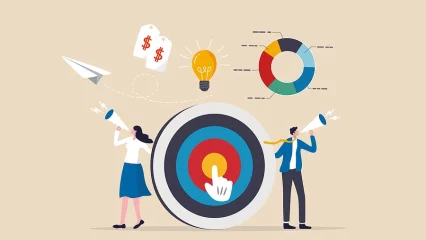Tom Barkley has in-depth knowledge and expertise across the financial sector. In this masterclass on different financial instruments, he offers a thorough introduction to derivatives.
After obtaining an MBA from Thunderbird School of Global Management (US), Tom worked for various institutions, including Enron and the Risk Analytics Group at Florida Power & Light (Juno Beach, FL). Following this, he completed the requirements for a PhD in Finance at the University of Florida (US).
Currently, Tom is director of the MS in Finance program at the Whitman School of Management at Syracuse University (Syracuse, NY). He is also a professor of finance practice, teaching courses and doing research in corporate finance, working capital management, derivatives, and alternative investments.
His extensive experience includes retail banking in the UK, teaching high-school mathematics in the Bahamas, and general management of a family-run publishing company in Brazil.
What are derivatives?
Derivatives are complex financial instruments whose price depends on another asset’s value.
Tom explains that corporations use derivatives daily – to hedge against losses from price changes in the equity, fixed income, commodity, and currency markets. Tom explains further that the most common derivative securities are used to lock in prices (futures), exchange future cash flows (swaps), or benefit from profitable opportunities (options).
Although many retail investors view these derivatives as highly complicated, costly, and risky, trading platforms now offer futures and options for personal and institutional investments.
Derivatives explained: Futures, swaps, and options
Futures are offered on exchanges and come with clear specifications. A futures contract obliges the holder to buy or sell an asset at a predetermined delivery price during a specific future period. Interestingly, the use of such products dates back to exchanging agricultural commodities in the past.
Tom then defines swaps as arrangements to exchange cash flows in the future according to a prearranged formula. They are traded over the counter, with credit default swaps being among the most common types of swaps.
The webinar continues with more information on options, including stock options, available on exchanges and accessible for retail investors. Tom says that options can be divided into call options and put options – when you have the right to buy or sell, respectively, an asset for a certain price by a certain date in the future. Here the volatility of the assets plays a role – Bitcoin, other cryptocurrencies, and meme stocks are among the most volatile products today.
Tom also mentions other derivatives, such as employee stock options offered by corporations, calendar spreads offered in packages, and exotic options like binary options.
For more information on the topic, as well as programs and waiver fees offered by the Whitman School of Management at Syracuse University, do not hesitate to watch Tom’s engaging webinar.


